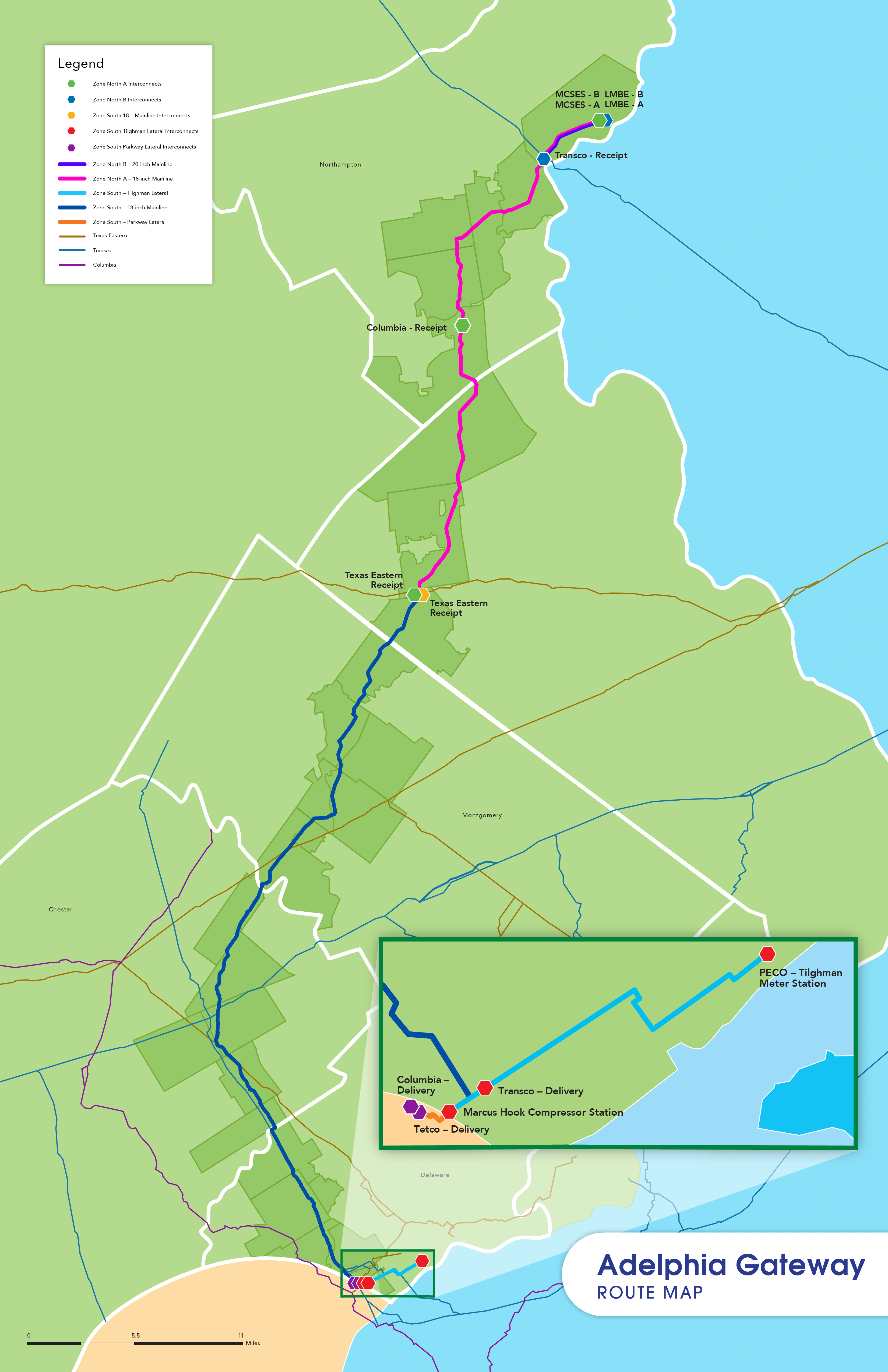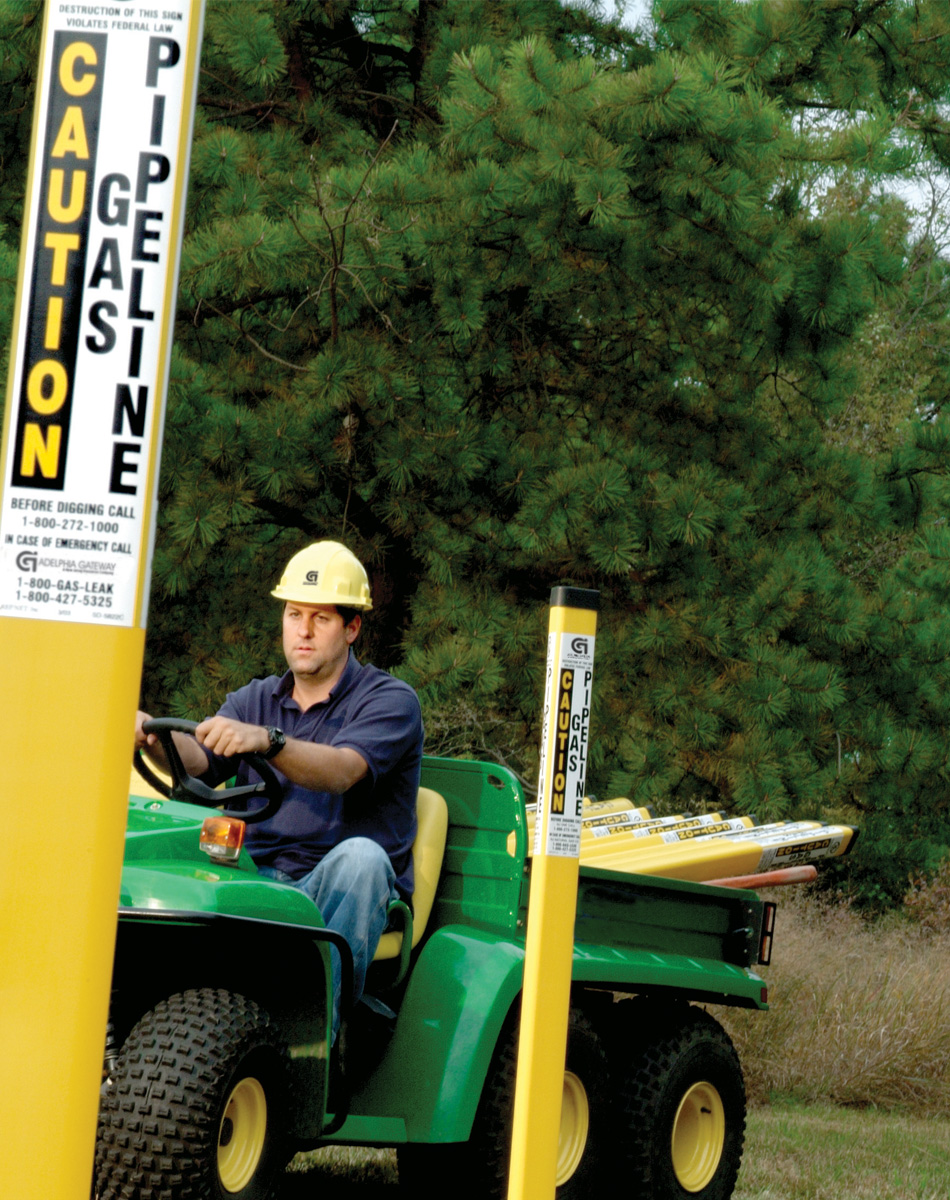
Pipelines play a key role in our everyday lives. They move products necessary for heating and cooling our homes, producing our food supply, fueling the transportation industry and manufacturing consumer products.
Pipelines are the safest, most efficient and most reliable way to transport energy resources throughout the United States.
Adelphia Gateway, LLC provides southeastern Pennsylvania homes and businesses with access to abundant, low-cost domestic natural gas. Adelphia Gateway uses existing infrastructure to transport natural gas to the Greater Philadelphia market. The 84-mile pipeline transports enough natural gas to meet the needs of more than 250,000 mid-Atlantic households each year.
To learn more about natural gas pipelines, visit the following website:
This information has been compiled from industry, government and research experts, and published materials. Why Pipeline 101? Pipeline 101 seeks to be your introductory resource for energy pipeline information. We invite you to explore the pipeline industry, from the steel in the ground to the people and technologies that ensure reliable energy delivery and safe operation.

You can see where Adelphia Gateway, LLC’s pipeline runs through your community by locating and identifying the pipeline marker signs at road crossings and other locations along the pipeline.
The pipeline route generally follows a long, narrow stretch of land, called a right-of-way, which designates a safe and clear corridor for the pipeline. Our pipeline right-of-way is generally 30 to 50 feet in width, and in certain areas it parallels other pipelines and electric transmission lines. This right-of-way enables our workers to gain access for inspection, maintenance, testing or emergencies. There are restrictions within the pipeline right-of-way that prohibit certain activities, permanent structures and trees.

Pipeline rights-of-way are required to be labeled with permanent markers that display the operator or company name, the product transported and the pipeline operator’s 24-hour emergency phone number. Click here to see examples of various types of pipeline markers on the Pipeline Hazardous Materials and Safety Administration website. The telephone number on these markers is for your use if an emergency is suspected or discovered.
These markers identify the approximate location of the underground pipeline and are located at road crossings, railroad crossings and wherever necessary to identify the pipeline right-of-way. Pipeline markers do not indicate the exact location or depth of the pipeline. Please call 811 to have a company representative accurately locate our pipeline before excavating on your property. When any construction activity is conducted in or around our pipeline right-of-way, Adelphia Gateway LLC’s on-site representative must be present at all times. Excavation operations shall be performed in accordance with Pennsylvania One Call utility locating system requirements. As a matter of law, anyone undertaking excavation work is required to call three (3) working days before excavating.

The right-of-way must always be kept clear to allow the pipeline to be safely operated, aerially patrolled and maintained. We are responsible for maintaining the right-of-way to protect the public, the environment and our pipeline. Any encroachment hinders our ability to inspect and maintain the right-of-way.